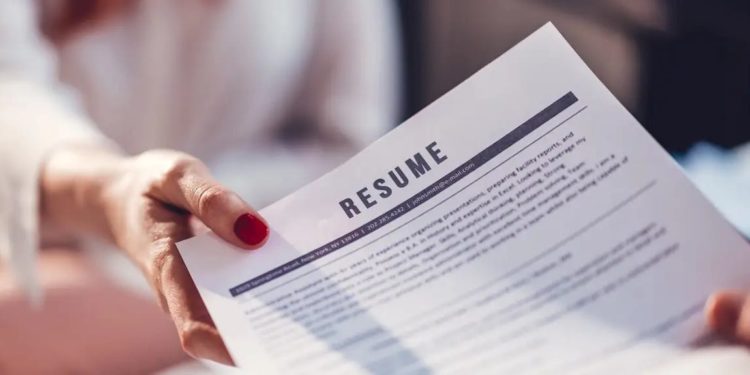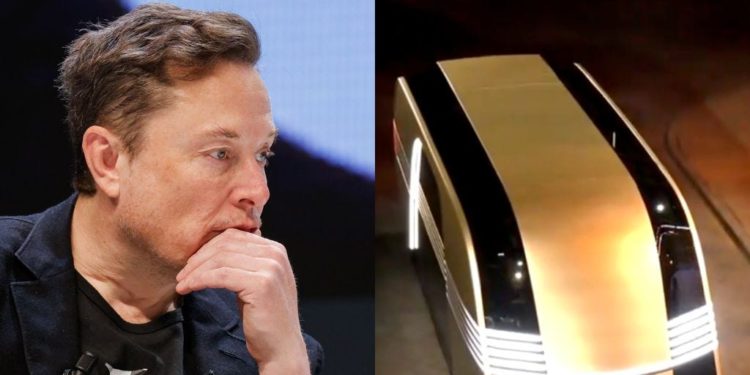NEW YORK TIMES
After years of promises, Tesla on Thursday unveiled a car that Elon Musk, the company’s chief executive, said will be able to drive itself without human supervision. Mr. Musk has said the vehicle will add trillions of dollars to the company’s stock market value and fuel its growth.
The “robotaxi,” which Mr. Musk also referred to as a “cybercab,” will cost less than $30,000 and be available before 2027, he said. He acknowledged, “I tend to be a little optimistic.”
The product, which does not have a steering wheel or pedals, is a prototype of a self-driving taxi that Mr. Musk has staked Tesla’s future on.
Mr. Musk promised that the vehicle, which appeared to be made of stainless steel, will be able to ferry passengers to any destination without human intervention, a feat that other companies have achieved in just a few places, like Phoenix and San Francisco.
“You could fall asleep and wake up at your destination,” he said.
The much-anticipated unveiling event at the Warner Bros. studio near Los Angeles began almost an hour late after one of the invitation-only guests suffered a medical emergency, according to Mr. Musk.
Tesla’s existing cars, including the Model 3 sedan and Model Y sport utility vehicle, will be able to offer robotic taxi rides in Texas and California well before the new vehicle becomes available, Mr. Musk said.
But many experts are doubtful that such Tesla taxis will hit the roads anytime soon. Mr. Musk has for several years claimed that the company was months away from starting a Robotaxi service. In addition, the autonomous driving technology Tesla offers today can make basic mistakes, requiring drivers to intervene to avoid accidents or violating traffic laws.
Still, Mr. Musk’s supporters and fans believe that the Robotaxi will open a lucrative line of business that will more than make up for Tesla’s recent struggles in the electric car market, where it has lost market share to more established carmakers. Mr. Musk has said people will be able to purchase Robotaxis for personal use and earn extra money by allowing the vehicles to ferry passengers, the automotive equivalent of listing a home on Airbnb.
“This is a game changer,” Shay Natarajan, a partner at Mobility Impact Partners, a private equity firm that invests in sustainable transportation but does not own shares in Tesla, said in an email after the event. “If this technology works well, it will completely change personal car ownership and mobility.”
But Ms. Natarajan questioned whether Tesla’s technology, which relies on cameras to navigate, will be able to operate in any conditions, as Mr. Musk has promised. Most other carmakers also use laser sensors to detect people and objects.
Other analysts and autonomous driving experts said there was little evidence that Tesla was close to perfecting the technology and making a profit from it.
A car capable of functioning as a self-driving taxi “is still several years away, and numerous technological hurdles, safety tests and regulatory approvals are still standing in the way,” Garrett Nelson, senior equity analyst at CFRA Research, said in a note this week.
For Tesla investors, whose shares are trading for about the same price they were at the beginning of the year, much was riding on the event.
Tesla’s status as the most valuable car company in the world was once based on Mr. Musk’s claim that the company would sell 20 million cars a year by the end of the decade, twice as many as Toyota and more than 10 times as many as Tesla sold last year.
Lately, as sales growth at Tesla has slowed, Mr. Musk has stopped emphasizing that goal and instead staked the company’s future on self-driving technology. People who don’t believe in Tesla’s ability to conquer the obstacles to fully autonomous driving “should not be an investor in the company,” Mr. Musk said in April.
Many analysts are skeptical that, even if Tesla can perfect the technology, it will deliver the profits Mr. Musk has forecast. Tom Narayan, an analyst at RBC Capital Markets, estimated that self-driving taxis would generate $1.7 billion in vehicle sales worldwide in 2040. But Tesla will own only a slice of the market, Mr. Narayan said.
“This is not happening in big numbers anytime soon,” he added.
On Thursday Tesla also showed the latest version of its Optimus humanoid robot. A film showed the robots serving drinks, playing board games with children and unloading groceries from a car.
“This will be the biggest product ever of any kind,” Mr. Musk said.
In a surprise, Tesla also rolled out an autonomous “robovan” capable of transporting 20 people. “We’re going to build this,” Mr. Musk said. But the company disappointed some investors who had hoped to see a prototype of a Tesla car priced lower than existing models. Tesla has said such a car will go on sale next year.
Tesla already sells a monthly subscription for a system it calls Supervised Full Self-Driving to owners of its electric vehicles. But the company says drivers using it must be ready to intervene at any moment if the software makes a mistake.
A ride last week in a Tesla Model 3 equipped with the latest version of Full Self-Driving indicated that the company still has work to do.
The car’s performance during a drive through Manhattan and Queens was impressive at times. It was courteous to pedestrians, once stopping, in the Rockaway Beach neighborhood, for two children who were stepping off a sidewalk onto a four-lane street where there was no crosswalk or traffic signal.
But on numerous other occasions the car avoided accidents or illegal maneuvers only because the driver intervened. The car was being driven by Guy Mangiamele, director of vehicle testing for AMCI Testing, a Los Angeles-based research firm that assesses vehicle performance for car companies and other customers.
With full self-driving engaged, the car became confused in a tunnel between Manhattan and Queens, slowing dangerously in heavy traffic. In Manhattan’s financial district, the car ran a red light. It tried to make a left turn onto West 29th Street from a middle lane of the Avenue of the Americas, and would have cut off a police car had Mr. Mangiamele not intervened.
Mr. Mangiamele, who has tested the software over hundreds of miles in various locations, called it an “incredible accomplishment” that nonetheless has “glaring shortcomings.”
Accidents attributed to earlier versions of Tesla software have prompted numerous lawsuits and an investigation by the National Highway Traffic Safety Administration. The agency has said the technology does not adequately ensure that drivers remain attentive. In April, it issued a report linking hundreds of accidents and at least 29 fatal crashes to the use of Tesla’s driver-assistance systems.
Mr. Musk has long said that Tesla vehicles would be able to operate without human intervention. His unfulfilled promises prompted a class-action lawsuit by the Oakland County, Mich., pension fund and other shareholders who claimed he misled them about the company’s technology in violation of securities laws.
But a federal judge in California ruled in favor of Tesla last month, citing laws that allow executives to make optimistic statements even if they later prove to be untrue. The ruling grants broad leeway to Mr. Musk.
Tesla is not the only company pursuing self-driving taxis. In China, the tech giant Baidu is testing autonomous taxis on public streets. Waymo, a subsidiary of Google’s parent company, has been operating a driverless taxi service for years. It recently said its cars were providing more than 100,000 rides a week in San Francisco, Phoenix and Los Angeles. Cruise, a unit of General Motors, recently restarted testing driverless taxis after one of its cars hit and dragged a pedestrian last year in San Francisco. And Zoox, owned by Amazon, is testing a driverless van that has no steering wheel with plans to start a paying service.
Analysts say it will probably be years before those companies or Tesla is running a profitable taxi service in many urban areas. And even then such services will need sizable teams of engineers, mechanics, cleaners and others to operate.
“Elon’s Robotaxi represents a potential paradigm shift in the transportation industry,” Karl Brauer, executive analyst at iSeeCars, a used car shopping site, said in a statement this week, “but it’s not going to happen overnight.”



Connect with us on our socials: